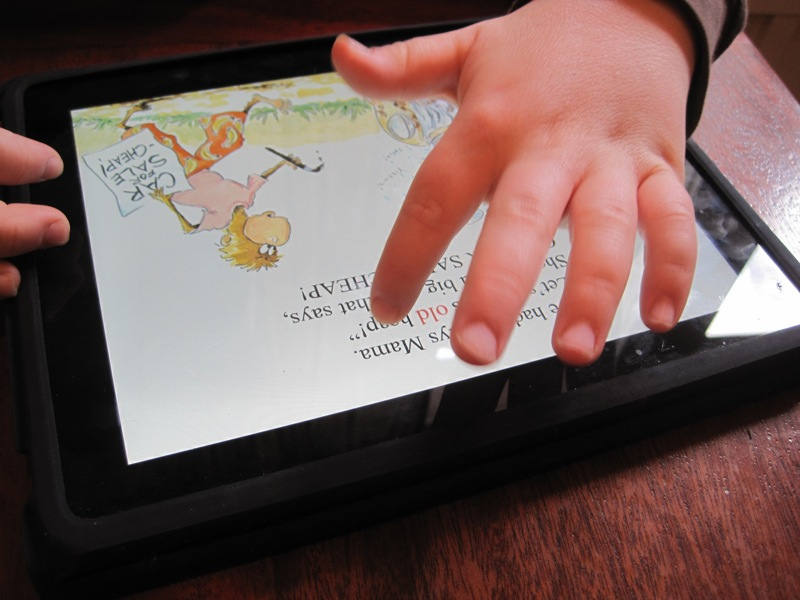
There’s a saying among families who have kids on the autism spectrum: If you’ve met one kid with autism, you’ve met one kid with autism. Those on the spectrum have challenges socializing, communicating, and behaving in typical ways. But while some may have no interest in other people, others may be so interested in joining a group at play that they jump in without asking permission. Some repeat phrases said to them over and over; others don’t say much at all. With such a complicated set of symptoms, there is a plethora of ways to support these kids. But which are the most effective and most promising—especially in the classroom, where kids are supposed to learn arithmetic while also not getting so frustrated that they shut down? In advance of the Zócalo/ASU event, “How Should We Teach Children with Autism?”, we asked scholars and educators: What has been the biggest recent breakthrough in helping kids with autism learn?

One of the things we have done a better job of in the last few years is educating educators on the importance of integrating evidence-based practices into school and home life. A few years ago, if you asked a special educator to name a few practices tested in well-run scientific experiments for autism spectrum disorders (ASDs), you might have gotten one. Today, due to the efforts of many state departments of education, educators are incorporating these practices into the daily routines of students with autism spectrum disorders.
If I had to select one recent study that holds promise for an additional new direction for the education of individuals on the autism spectrum, it would be a 2013 study by Cynthia C. Woo and Michael Leon titled, “Environmental Enrichment as an Effective Treatment for Autism.” Recent research has confirmed that many individuals with autism spectrum disorders are affected by sensory processing dysfunction that can disturb learning, social behaviors, and communication skills. Woo and Leon asked parents of children in the treatment group to conduct enrichment sessions involving combinations of sight, touch, temperature, and movement. For example, a scented drop was placed on a cotton ball in a glass, and the child was allowed to sniff it for a minute. This was paired with rubbing the child’s back. Another exercise had the child place his or her hands or feet in water of different temperatures. Exercises became increasingly more challenging over six months. Forty-two percent of the children in the treatment group improved their responses to sensory stimuli and in relating to people, whereas only 7 percent improved in the control group. Cognitive skills also increased. Given the fact that many individuals with ASDs experience difficulties with sensory stimuli, treatments targeted to improve tolerance hold much promise for the future. It is a cost-effective treatment since the materials used are common household items, and the exercises can be fairly easily taught to families and educators.
Barbara Becker-Cottrill is a senior research associate at and the past executive director of the West Virginia Autism Training Center at Marshall University. She is the co-founder of the College Program for Students with Asperger Syndrome and co-author of Autism: A Primer for Educators.

People with autism don’t have traditional social skills—they make errors that include hogging conversations, pointing out what other people are doing wrong, and not showing empathy toward others. A decade ago, there were virtually no social skills programs that had done the research to show that what educators were teaching people with autism was actually working and helping them form meaningful relationships. That’s when I started a program called PEERS (Program for the Education and Enrichment of Relational Skills) with my UCLA colleague Fred Frankel for higher-functioning teens and young adults on the autism spectrum.
There’s a misconception that people with autism don’t want to have friendships or romantic relationships—that they would rather be alone. For most, this isn’t true. So our program teaches them concrete rules and takes them step-by-step through social skills, everything from basic hygiene and grooming to more advanced skills such as developing friendships.
What made our program work particularly well was that we learned how important parents and caregivers can be since we, the clinicians, were only with the kids and teens for a short period of time (14 to 16 weeks). Our program is unique in that we have group sessions for our parents and caregivers so they can learn how to be “social coaches.”
Our research has found that teens and young adults who went through our program have dramatic improvements in their social interactions: For instance, they’re more likely to get together with their friends and understand the perspectives of others than those who didn’t go through the program. Even teachers who weren’t involved in the research and didn’t know that some of their students were receiving treatment saw improvements in their classrooms from these young people. The benefits lasted when we followed up with these teens and young adults one to five years later, which really speaks to the power of parental involvement to keep these skills fresh.
Elizabeth Laugeson is a licensed clinical psychologist and assistant clinical professor at the UCLA Semel Institute for Neuroscience and Human Behavior. She is also the director of The Help Group-UCLA Autism Research Alliance, a collaborative research initiative dedicated to developing and expanding applied clinical research in the treatment of children and adolescents with autism spectrum disorder.

In the past few years, technology has been a big breakthrough in helping kids with autism learn (and not in the iPad-apps-cure-everything way). Technology allows us to teach students in a personalized, customized way despite limited human resources. When you add into the equation that so many kids find computers, iPads, and so on just inherently appealing, you have the ability to draw them in, retain their attention, and provide customized educational content all in one nice little package.
Now, people have been using computers for kids with autism for decades. So, that’s not new, but what we do have in the last few years is the advent of really simple-to-use mobile development and distribution platforms. Anyone can now write an app, get it in the app store, and get it out to millions of people in a short time.
For example, for non-verbal children, the app Proloquo2Go, which allows children to tap out what they want to say with the help of symbols, has become the primary means of communication for many kids. Although it is expensive, it is much cheaper than the specialized hardware platforms it replaces. I am a bit of a data junkie, so I like things like Autism Tracker Pro as well, because it can help parents see the patterns in their kids’ behavior and empower them to make their own decisions about treatments.
I also think that a lot of software that was developed for other settings has helped autism education as well. Things as simple as shared calendaring, which is present on basically every laptop and smartphone, are transformative for older students with barriers to employment and independent living.
Gillian Hayes is an associate professor of informatics at UC Irvine and director of technology research at the Center for Autism & Neurodevelopmental Disorders. Her Social and Technological Action Research Group creates, reviews, and tests new autism technologies.

The biggest breakthrough in helping kids with autism learn is believing they can learn and creating an environment in which they are comfortable to learn.
This past August, we had some new students at the Autism Academy who hated school and hated teachers and came with significant behavior issues (physical aggression toward others, verbal outbursts, running away, work avoidance). Their families were told by other educators that their children should be placed in an institution. But that’s not our approach. Before we look at the best ways to teach, we first need to create a calm, caring, and safe environment. After that environment is created, each teacher must build a trusting relationship with each student. We set clear and consistent expectations: clear instructions for what to do, how long to do it, and what comes next. This helps lessen anxiety, especially in our students who have secondary issues such as ADHD and obsessive-compulsive disorder.
We keep in mind there is a hidden curriculum that we need to accomplish along with academics: Social and life-skill lessons are imperative. These are important conversations for kids with autism because we need to explicitly teach everything. Our students need guidance on how to read between the lines. A great way to do this is through social stories—where the teacher goes through a written paragraph that explains what to do and what not to do in specific social situations (for example, how to order in a restaurant). Other tools include video modeling (where clips show kids acting out social situations and teachers discuss the clips with a small group of kid with autism) and role-playing (where kids can practice the correct responses to social challenges). All of these visual lessons help students walk through problems and situations with practical examples on how they can safely and efficiently manage the outside world.
Shannon Henley has worked with students with autism and multiple disabilities for the last 13 years within the school and home settings. She currently works as the director of the Autism Academy, a K-12 school in Gilbert, Arizona.



